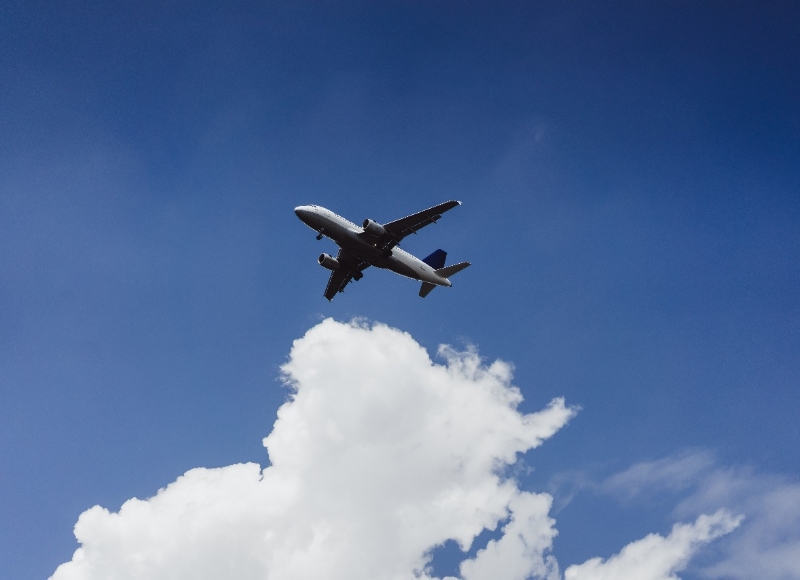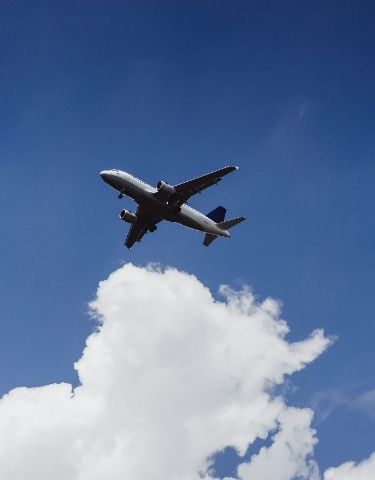Introduction
The intricate world of aviation operates at the intersection of precision engineering, human expertise, and inherent uncertainty. While technological advancements have made flying safer than ever, a persistent and complex risk remains: pilot fatigue. Fatigue itself is a natural physiological state. However, its uncontrolled presence in a high-stakes environment like a cockpit transforms it from a benign human condition into a critical systemic vulnerability. This risk, often invisible and insidious, has been a contributing factor in numerous aviation incidents globally. The Directorate General of Civil Aviation (DGCA) in India has recently proposed new guidelines to address this issue. This blog examines the DGCA’s new guidelines through a risk management lens, analyzing their potential to create a more secure aviation ecosystem.
Risk Identification
Pilot fatigue is a multi-dimensional threat with far-reaching consequences that can be categorized across various domains of risk. Aviation risk management begins with a risk identification process that reveals the following:
- Operational & Safety Risks – Operational risk is the most immediate category. Fatigue leads to reduced cognitive function, slower reaction times, impaired decision-making, and diminished situational awareness. It increases the likelihood of human error in critical phases of flight, such as take-off and landing. A fatigued crew is less capable of responding effectively to an unexpected event, elevating the risk of a flight incident or accident. This risk directly threatens the lives of passengers and crew and the integrity of the aircraft.
- Financial Risks – The financial repercussions of a fatigue-related incident are immense. They include the direct costs of damage to aircraft, potential litigation and compensation claims from affected parties, and a sharp increase in insurance premiums. The subsequent investigations can lead to flight groundings and operational disruptions, resulting in significant revenue loss. Robust financial risk management can address these risks.
- Reputational Risk & Brand Risks – In the wake of an incident, an airline’s brand and public trust can be irreparably damaged. Modern media and social channels amplify any perceived negligence, leading to a loss of public confidence and a negative impact on ticket sales. Such an incident could attract international scrutiny and potentially impact India’s standing in global aviation.
- Human Capital Risks – A culture that disregards pilot fatigue can lead to low morale, high attrition rates among pilots, and difficulties in recruitment. Neglecting fatigue creates a negative feedback loop of burnout and declining performance. Introducing pilot fatigue management to prioritize the long-term well-being and mental health of flight crew is integral to safe operations.
Risk Mitigation Strategies
DGCA’s new guidelines include the following measures that can mitigate flight risks –
- Transitioning to a Fatigue Risk Management System (FRMS)
The most significant shift is the DGCA’s move to a Fatigue Risk Management System (FRMS). Unlike the traditional Flight Duty Time Limitation (FDTL) rules that simply set maximum duty hours and minimum rest periods, the FRMS is a performance-based, data-driven approach. It recognizes that fatigue is a complex physiological state that can be influenced by multiple factors, even within legal duty limits.
- FRMS relies on bio-mathematical fatigue models, sleep and activity tracking, and crew self-reporting to build a more accurate picture of fatigue development. This allows airlines to identify and manage fatigue risks proactively before they become a safety issue.
- Airlines will have the option to either continue with the existing FDTL regulations, adopt a full FRMS, or use a hybrid model. This flexibility allows for adaptability to different operational needs, but it is subject to rigorous regulatory approval and ongoing oversight.
- Revising Flight Duty Time Limitation (FDTL) Norms
Even as the new FRMS framework is proposed, the DGCA has already put in place revised FDTL norms to immediately enhance safety. These prescriptive rules are being implemented in a phased manner and provide a crucial baseline for fatigue management.
- The minimum weekly rest period for pilots has been increased to 48 consecutive hours. This is a significant jump from the previous 36-hour requirement and ensures that crews have an adequate opportunity for recovery.
- The guidelines redefine night hours to better align with the body’s natural circadian rhythm. They also limit the number of night landings a pilot can perform and restrict consecutive night shifts to prevent cumulative fatigue from disrupting sleep cycles.
- For pilots on ultra-long-haul flights, an additional 24-hour rest period is now required after two consecutive flights, recognizing the extreme physical and mental toll of such demanding duties.
- Promoting a Non-Punitive Safety Culture
A key component of the new framework is the establishment of a “non-punitive” safety culture. This is critical for the success of any fatigue management system that relies on self-reporting.
- The guidelines stress that operators must establish policies where flight crew members can report being unfit for duty due to fatigue without fear of punishment or disciplinary action. This encourages honest and timely reporting, which is essential for identifying systemic issues.
- The responsibility for fatigue management is explicitly shared between the airline and the crew. While the airline must provide adequate rest and create a supportive environment, crew members are also expected to use their off-duty periods to get sufficient rest and report any fatigue issues.
- Establishing Robust Oversight and Governance
To ensure the new guidelines are effectively implemented, the DGCA has mandated specific governance structures within airlines.
- Airlines are required to establish a dedicated Fatigue Safety Action Group (FSAG) to oversee the implementation and management of the FRMS. This group, composed of representatives from various departments including flight operations, crew scheduling, and safety, will regularly review fatigue data and develop mitigation strategies to manage fatigue in aviation.
- Operators must continuously monitor and submit data to the DGCA to prove the effectiveness of their FRMS. This creates a system of continuous improvement, where the regulator can audit and ensure that safety targets are being met.
Other solutions to mitigate fatigue-related risks in aviation –
- Crew rest management – Investing in superior crew rest facilities and offering comprehensive training on sleep hygiene, self-assessment, and fatigue countermeasures empowers pilots to manage their own well-being effectively.
- Advanced FRMS software can use machine learning to generate optimal schedules that minimize fatigue, taking into account layover times, time zone changes, and consecutive duty periods.
- Wearable devices can provide real-time physiological data on crew alertness. While still a nascent area, data from devices tracking heart rate variability, sleep patterns, and electrodermal activity could offer objective insights into a pilot’s fatigue level, allowing for timely intervention.
- Integrating fatigue data into the cockpit’s flight management systems could trigger non-intrusive alerts or provide additional safeguards during high-fatigue periods, such as during the “red-eye” hours of a long-haul flight.
The new DGCA guidelines provide a solid foundation, but forward-thinking airlines must look beyond minimum compliance to truly mitigate fatigue-related risks.
Mapping DGCA’s guidelines against Enterprise Risk Management Frameworks
- The new guidelines align perfectly with the principles of ISO 31000. It begins with Risk Identification. It then moves to Risk Analysis, where the likelihood and consequence of fatigue-related incidents are quantified and evaluated. The DGCA has essentially defined a baseline for the Risk Evaluation phase, dictating what is an acceptable level of fatigue risk for the industry. The implementation of FRMS and other strategies constitutes Risk Treatment. Finally, the new guidelines require continuous monitoring and review, ensuring that the system remains effective over time.
- The new DGCA guidelines are a clear articulation of a baseline risk appetite for the Indian aviation industry. By setting stringent limits and requiring a robust FRMS, the DGCA is effectively stating that the industry’s risk appetite for fatigue-related incidents is extremely low. Airlines must then define their internal risk appetite, ensuring it is even lower than the regulatory baseline to maintain a competitive advantage in safety and public trust.
Common Pitfalls to Avoid
For Indian airlines, the DGCA guidelines should be seen not as a burden, but as a strategic opportunity. As Indian airlines implement the new guidelines, they must be aware of common pitfalls –
- Viewing the FRMS as a mere regulatory requirement rather than a foundational element of safety. This leads to superficial implementation and a system that fails in a real-world scenario.
- Treating FRMS software, training, and rest facilities as costs rather than strategic investments in safety and brand reputation.
- The success of the FRMS depends on the cooperation of all stakeholders, from top management to pilots and ground crew. A failure to get buy-in will result in a system that is resisted and ultimately ineffective.
- A culture that punishes pilots for reporting fatigue will drive the risk underground, making it impossible to identify and manage.
- The new guidelines mandate data collection. Not leveraging data analytics to identify trends, pinpoint high-risk routes, and optimize scheduling and rest periods will cost airlines their competitive edge. Data-driven insights are the key to a truly effective FRMS.
Future Direction
The DGCA’s new guidelines are a landmark step, moving Indian aviation towards a more risk-based approach to managing pilot fatigue. By mandating the implementation of a Fatigue Risk Management System, the DGCA is empowering airlines to proactively identify, assess, and mitigate a critical risk hampering aviation safety in India. However, the ultimate success of this initiative will depend on how Indian airlines embrace this shift. By treating fatigue not as a personal failing but as a systemic risk, the Indian aviation sector can build a more resilient, safer, and globally competitive future.















